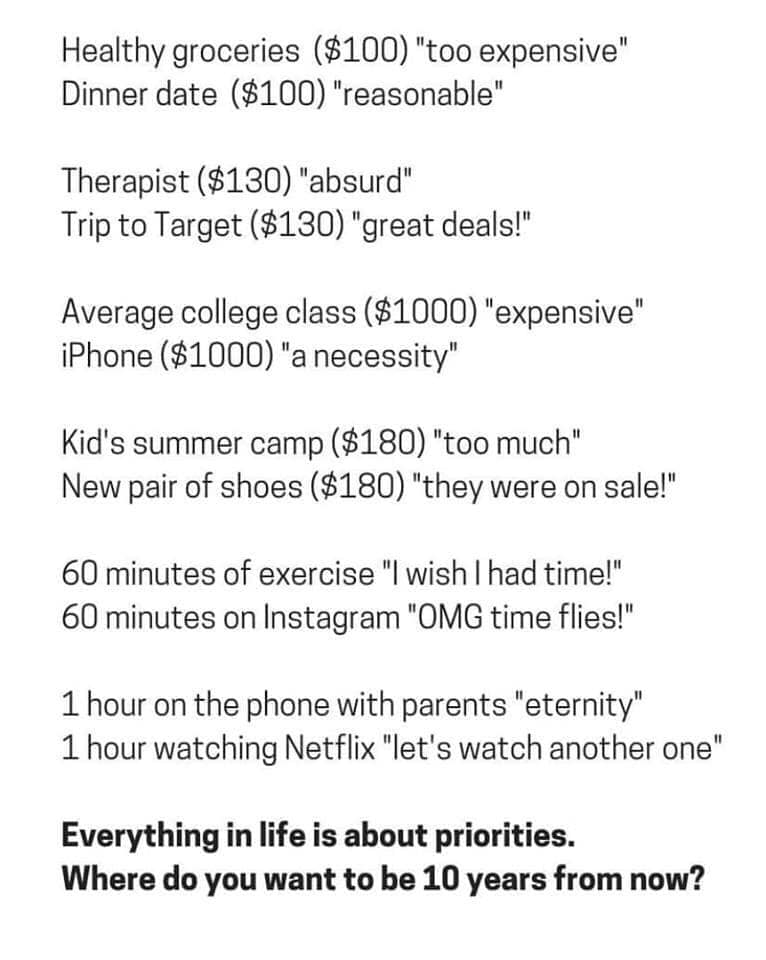
Do you have any more comparisons to add? Write them below.

Do you have any more comparisons to add? Write them below.
While this link specifically talks about pricing for photographers, you could substitute almost any profession here.
On one hand, I agree with what they’re saying: Sell the emotional aspects of your service first. If people decide they want the quality and peace of mind you offer, they’ll be more willing to pay a price that’s higher than they expected.
Let me be blunt: you need to start raising your prices. However, this pricing must be in context. Pricing, like everything else, is connected to. . . well, everything else.
If you are selling old watches at a flea market, setting your price at $1,000 per watch is probably not a good idea. Even if the watches are worth that much, it’s unlikely you’ll find very many educated aficionados wandering through a flea market expecting to spend several thousand dollars on old watches. You need to be able to provide a quality product or service to a target market that can appreciate and afford your prices.
But charging more money just to put it in your pocket can be self-defeating. You must use some of the higher payment to invest in your business, so that new and existing clients will still be willing to pay higher prices. Higher pricing can help your product or service become aspirational; people will save up to be able to afford you.
By charging a higher price, you also cut down on the people who can afford you. This is true. And if you’re looking to provide service to a less financially capable group, raising your prices may seem like a cruel thing to do.
But, look at it this way: the ones who can afford your prices will afford you the time to help the most needy at low or no cost. Essentially, they’re subsidizing your good deeds. I have a health professional who, at the beginning of her career, was conflicted between helping the poor in need and making enough to survive herself. Now she charges high fees for her services, and is financially sound enough herself to be able to afford to help those in need for little or no cash.
You should have a budget written out, along with sales goals you need to meet in order to address that budget. Let’s say you need make a profit of $1,000 per week to break even with your planned expenses. If you have a service that nets you $100 per sale, you need to sell 10 of those to meet your $1,000 goal.
But say you create a service that, when purchased, nets you $1,000. How many of those do you have to sell per week to meet your needs? Just one. Now if you’re attempting to sell the higher-priced service to the same people who can only afford the lower-priced one, you will meet a lot of price resistance. But, if you find a group of people who appreciate the higher-end service and can afford the price, and market it to them, you may wind up with the same sale-to-offer ratio you had before. Perhaps a better ratio.
Stop right now and look at whatever you’re selling. Imagine that your costs suddenly doubled. What would that product or service have to be like in order to get your clients to buy the newer, higher-cost version? What would you add to make it worth it then?
Now, what could you add right this minute to get them to pay the new, higher price? A nicer wrap job? More personal attention? A better guarantee? A nicer sales location? What would it take to attract and keep clients who can afford and appreciate the newer, higher-priced version of what you’re selling?
Now – right now – raise your price and start providing that better experience to that target market!
A $1,200 hair cut? People are lining up for them.